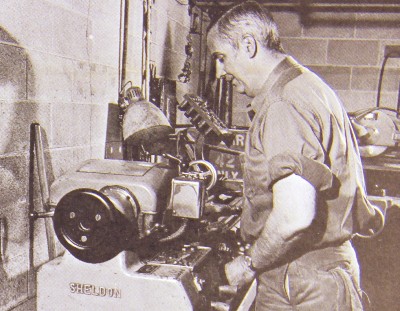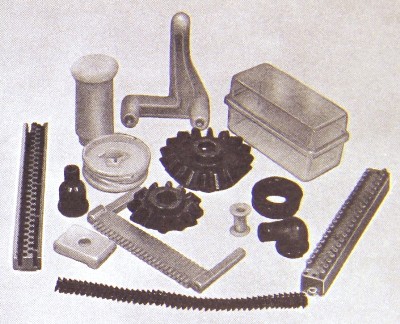Defining: Tool & Die Makers
Tool and die makers are the most highly skilled workers in manufacturing. These workers produce and repair tools, dies, and special guiding and holding devices that enable machines to manufacture a variety of products we use daily—from clothing and furniture to heavy equipment and parts for aircraft.

Toolmakers craft precision tools and machines that are used to cut, shape, and form metal and other materials. They also produce jigs and fixtures—devices that hold metal while it is bored, stamped, or drilled—and gauges and other measuring devices. Die makers construct metal forms, called dies, that are used to shape metal in stamping and forging operations. They also make metal molds for diecasting and for molding plastics, ceramics, and composite materials. Tool and die makers craft prototypes of parts, and then, working with engineers and designers, determine how best to manufacture the part. In addition to developing, designing, and producing new tools and dies, these workers also may repair worn or damaged tools, dies, gauges, jigs, and fixtures.
To perform these functions, tool and die makers employ many types of machine tools and precision measuring instruments. They also must be familiar with the machining properties, such as hardness and heat tolerance, of a wide variety of common metals, alloys, plastics, ceramics, and other composite materials. Tool and die makers are knowledgeable in machining operations, mathematics, and blueprint reading. In fact, tool and die makers often are considered highly specialized machinists. The main difference between tool and die makers and machinists is that machinists normally make a single part during the production process, while tool and die makers make many parts and assemble and adjust machines used in the production process.
Tool and die makers are also trained to design tools. They may travel to a customer’s plant to observe the operation and suggest ways in which a new tool could improve the manufacturing process.
|
Once a tool or die is designed, tool and die makers, working from blueprints, plan the sequence of operations necessary to manufacture the tool or die. They measure and mark the pieces of metal that will be cut to form parts of the final product. At this point, tool and die makers cut, drill, or bore the part as required, checking to ensure that the final product meets specifications. Finally, these workers assemble the parts and perform finishing jobs such as filing, grinding, and polishing surfaces. While manual machining has declined, it is still used for unique or low-quantity parts that are often required in building tools and dies.
Tool and die makers use computer-aided design (CAD) to develop products and parts. Specifications entered into computer programs can be used to electronically develop blueprints for the required tools and dies. Numerical tool and process control programmers use computer-aided design or computer-aided manufacturing (CAD/CAM) programs to convert electronic drawings into CAM-based computer programs that contain instructions for a sequence of cutting tool operations. Once these programs are developed, computer numerically controlled
(CNC) machines follow the set of instructions contained in the program to produce the part. Computer-controlled machine tool operators or machinists normally operate CNC machines, but tool and die makers are trained in both operating CNC machines and writing CNC programs, and they may perform either task. CNC programs are stored electronically for future use, saving time and increasing worker productivity.

After machining the parts, tool and die makers carefully check the accuracy of the parts using many tools, including coordinate measuring machines, which use sensor arms and software to compare the dimensions of the part to electronic blueprints. Next, they assemble the different parts into a functioning machine. They file, grind, shim, and adjust the different parts to properly fit them together. Finally, tool and die makers set up a test run using the tools or dies they have made to make sure that the manufactured parts meet specifications.
If problems occur, they compensate by adjusting the tools or dies.
|
 McNulty Tool & Die
McNulty Tool & Die McNulty Tool & Die
McNulty Tool & Die